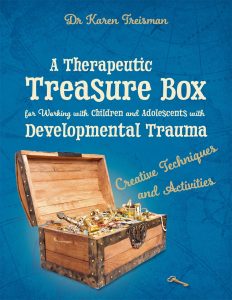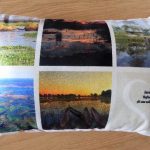 Karen Treisman, author of A Therapeutic Treasure Box for Working with Children and Adolescents with Developmental Trauma: Creative Techniques and Activities, is a specialist clinical psychologist, trainer, and author. She is also the Director of Safe Hands and Thinking Minds Training and Consultancy services. In this blog post, she explores the different ways a therapist can create a safe place for children.
Karen Treisman, author of A Therapeutic Treasure Box for Working with Children and Adolescents with Developmental Trauma: Creative Techniques and Activities, is a specialist clinical psychologist, trainer, and author. She is also the Director of Safe Hands and Thinking Minds Training and Consultancy services. In this blog post, she explores the different ways a therapist can create a safe place for children.
One of the common tools in a therapist’s tool box is the imaginary safe place exercise. This can be a great way to support children, adolescents, parents, and ourselves to have an emotional safe haven and an inner place of safety.
In essence, the safe place exercise is where a child/adolescent/adult is supported to identify a place where they have felt safe, warm, and relaxed; and a place that is overwhelmingly associated with positive memories, sensations, and feelings. The person is then guided to enrich and connect with the details of their safe place through thickening descriptions and through all of their senses. For example, the sounds, the smells, the tastes, the thoughts, the feelings, the sensations, and so forth. The person usually also chooses a reminder word and a title for their safe place, which can be used as a shortcut for them to return to their safe place anytime that they wish (Step-by-step instructions for creating and entering into a safe place are described in “A Therapeutic Treasure Box for Working with Children and Adolescents with Development Trauma: creative techniques and activities”).
However, to make this safe place concept more meaningful and to bring it alive further, in “A Therapeutic Treasure Box for Working with Children and Adolescents with Development Trauma: creative techniques and activities”, I discuss and share practical ways to creatively and tangibly expand, explore, enrich, and extend on this safe place concept. Some of these creative extensions and suggestions follow, with some accompanying photographed examples:
Creative extensions for the safe place exercise might be (Not an exhaustive or prescriptive list):
- Make a visual poster/canvas/collage of the safe place using magazines, photos, drawings; and/or draw/paint/ mosaic the safe place.

- Sculpt the safe place. This could be using clay/ play-doh/ everyday items/ models/ pipe cleaners etc.

- Make or design the key, bridge, tunnel, hidden door, magic carpet, and/or fairy gates which can be used to enter into the safe place.

- Make or design a safe place inspired pillow case or blanket. This could be through using fabric pens to decorate it, iron-ons, or through transferring actual photo or images on to a pillow case/ blanket/ doodle teddy bear etc.

- Have a reminder script/story of the safe place. This could be extended by the therapist/caregiver putting a voice recording onto their smart phone, a DVD, or a USB which assists the child to be able to journey into their safe place.

- Make a mini representative of the safe place so that it can travel with the child. For example, it can be placed in a photo key ring/ on a postcard/ in a jar/ or in a snow globe etc.

- Choose a piece of music which is related to the safe place. Some children may want to write or choreograph their own associated safe place song/ music/ dance/dance.

- Make a body map which explores the child’s feelings when feeling unsafe/distressed; and then make a comparison body map of how they feel when they are in their safe place. You can have discussions such as, “If your body could talk what would it say?”, “Where in your body do you feel a sense of safety?”, “What does that feeling feel like?”, “If that feeling was a colour/item/shape what would it be?” etc.

For hundreds of other ideas, tools, and tips for supporting children and adolescents experiencing relational and developmental trauma see “A Therapeutic Treasure Box for Working with Children and Adolescents with Development Trauma: creative techniques and activities”).


